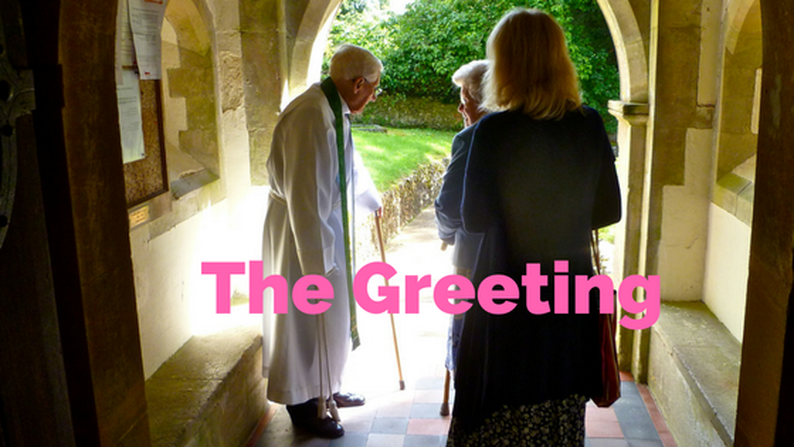“To greet or not to greet – that is the question: Whether ‘tis nobler to stand in the back of the sanctuary at the end of worship and suffer the slings and arrows of sermon critics or to avoid all manner of people and go directly to one’s office.”
It may be customary for clergy to stand at the back of the sanctuary to greet the congregation after the service, but for most clergy, it is not their favorite thing to do because you never know what people will say. One benefit of greeting each person from the congregation is the opportunity to learn about the emotional process.
Emotional process motivates behavior. It often occurs below the level of awareness (although people can work to become more aware of it). The emotional process helps explain how one reacts to anxiety in the relationship system. The more sensitive one is to anxiety, the more intensely one reacts to stressful situations. Remember, we are talking about a system. It’s not just about the sensitivity and reactivity of one person; it’s about the sensitivity and reactivity of the relationship system. Congregations are relationship systems, and one can learn a lot about oneself when greeting individuals from the congregation.
The next time you greet people at the end of a worship service, ask yourself the following:
- Who offers me praise?
- Who criticizes me?
- Who shares concerns with me about other people?
- Who likes to tell me what you to do?
- Who avoids me?
Then ask yourself these questions:
- How do I react to praise?
- How do I react to criticism?
- How do I react to concerns about others?
- How do I react to being told what to do?
- How do I react to others avoiding me?
As one becomes aware of these automatic responses, it’s helpful to understand them from a multigenerational perspective. Dr. Murray Bowen observed that sensitivity to anxiety is transmitted from one generation to the next through an emotional process. He called it the multigenerational transmission process. You can learn more about it by clicking here.
When you shake hands with someone from your congregation, it’s as if you are shaking hands with three generations of family members, for each person in each generation plays a part in influencing the emotional process and the automatic behaviors of the person whose hand you’re shaking.
On the surface, what people say may be positive or negative. Below the service the emotional process is influencing the comments. At the emotional level, we respond to anxiety by actively moving closer to someone or further away. Moving closer to someone has both a positive and negative expression. One can move closer by praising the other person. One can also move closer by criticizing the other; criticism can be a form of pursuit.
Criticism can also be a way to avoid others. When someone doesn’t come through the greeting line, they may be trying to avoid. It’s more than likely they will activate a triangle by talking to a third person about you. In either case, distancing is one way to manage the anxious tension present in the relationship system. If people are avoiding you, it may be the tension in the relationships system is too high and needs to be toned down.
This is why working on Bowen’s concept of differentiation of self is so important. The focus is on one’s functioning. When we are caught up in the emotional process, it’s easy to focus on the others by either blaming or judging. Part of the effort of differentiation of self is stepping back to observe and understand the emotional process and to avoid responding in automatic ways to the reactivity of others. It involves taking responsibility for one’s part in the emotional process. Greeting people at the end of the service is one way to learn about the emotional process.
What are your thoughts about the emotional process? Be sure to share them in the comment section.

 RSS Feed
RSS Feed